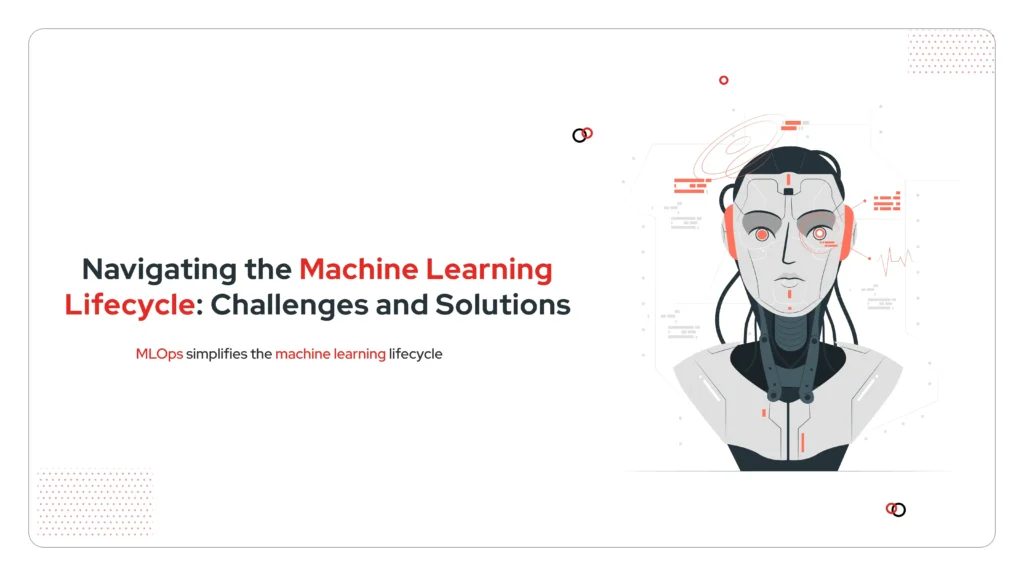
Machine learning projects face distinct challenges compared to traditional software development. The iterative nature of model development, the reliance on high-quality data, and the need for continuous monitoring and retraining are just a few of the complexities involved. MLOps, a set of practices and tools designed to manage the entire machine learning lifecycle, addresses these challenges by providing a structured framework for data preparation, model training, deployment, and monitoring.
Data Preparation and Feature Engineering
Data preparation and feature engineering are critical steps in the machine learning lifecycle. Unlike traditional software development, where the focus is primarily on code, machine learning heavily relies on the quality and relevance of the input data. Ensuring data quality and consistency is paramount to building accurate and reliable models.
One of the key challenges in this phase is handling data drift. Data drift occurs when the statistical properties of the input data change over time, leading to a degradation in model performance. To mitigate this issue, regular monitoring of data distributions and timely model retraining are necessary. MLOps practices, such as automated data validation and versioning, help in detecting and addressing data drift effectively.
Best Practices for Data Preparation
- Establish a robust data pipeline that ensures data quality and consistency.
- Implement data validation checks to detect anomalies and outliers.
- Version control your datasets to enable reproducibility and traceability.
- Regularly monitor data distributions and set up alerts for significant changes.
Model Training and Validation
Model training and validation are the heart of the machine learning lifecycle. This phase involves experimenting with different algorithms, hyperparameters, and model architectures to find the best-performing model for the given task. Experiment tracking and model versioning are essential practices in MLOps to ensure reproducibility and facilitate collaboration among team members.
Hyperparameter tuning is a crucial aspect of model training. It involves systematically searching for the optimal combination of hyperparameters that yield the best model performance. Techniques such as grid search, random search, and Bayesian optimization are commonly used for hyperparameter tuning. MLOps tools and frameworks provide capabilities for automating and managing this process efficiently.
Also Learn: Key difference between MLOps and DevOps
Recommended Tools for Model Training and Validation
- MLflow: An open-source platform for managing the end-to-end machine learning lifecycle, including experiment tracking, model versioning, and deployment.
- Weights and Biases (Wandb): A cloud-based platform for experiment tracking, visualization, and collaboration.
- Optuna: A hyperparameter optimization framework that supports various search algorithms and integrates seamlessly with popular machine learning libraries.
Model Deployment and Monitoring
Deploying machine learning models into production environments presents unique challenges compared to traditional software deployment. Models need to be containerized and orchestrated to ensure scalability and fault tolerance. Containerization technologies like Docker and orchestration platforms like Kubernetes have become the de facto standards for deploying machine learning models.
Continuous monitoring of deployed models is critical to maintaining their performance and detecting issues early. Monitoring model performance metrics, such as accuracy, precision, and recall, helps in identifying when a model needs to be retrained or updated. Additionally, monitoring data drift is crucial to ensure that the model remains relevant and accurate over time.
Key Considerations for Model Deployment and Monitoring
- Use containerization technologies like Docker to package models and their dependencies.
- Leverage orchestration platforms like Kubernetes for scalable and fault-tolerant deployments.
- Implement a monitoring infrastructure to track model performance metrics and data drift.
- Set up alerts and notifications for anomalies and performance degradation.
Continuous Integration and Delivery (CI/CD) for ML
Continuous Integration and Delivery (CI/CD) is a fundamental practice in DevOps that ensures software’s frequent and reliable release. In machine learning, CI/CD pipelines need to be adapted to accommodate the unique requirements of model development and deployment.
MLOps extends the traditional CI/CD pipelines to include steps specific to machine learning, such as data validation, model training, and model serving. Automated testing and validation of machine learning models are critical to catch regressions and ensure the quality of the deployed models.
Best Practices for CI/CD in Machine Learning
- Integrate data validation checks into the CI/CD pipeline to ensure data quality.
- Automate model training and evaluation as part of the CI/CD process.
- Implement model versioning and registry to track and manage model artifacts.
- Set up automated deployment pipelines for seamless model serving and rollbacks.
Collaboration and Knowledge Sharing in MLOps
Collaboration and knowledge sharing are essential aspects of MLOps that enable teams to work efficiently and leverage collective expertise. Machine learning projects often involve cross-functional teams, including data scientists, machine learning engineers, and domain experts. Establishing effective communication channels and documentation practices is crucial for successful collaboration.
MLOps platforms and tools provide features for sharing and documenting experiments, models, and insights. Jupyter notebooks, for example, have become a popular medium for documenting and sharing machine learning workflows. Version control systems like Git facilitate collaboration and enable tracking of changes in code and models.
Strategies for Effective Collaboration in MLOps
- Use collaborative platforms like Jupyter Notebooks and GitLab for sharing and documenting workflows.
- Establish clear documentation guidelines and templates for experiments, models, and datasets.
- Encourage knowledge sharing through regular team meetings, demos, and internal presentations.
- Leverage version control systems to track changes and enable collaborative development.
Final Thoughts!
Navigating the machine learning lifecycle involves addressing several unique challenges, from data preparation and feature engineering to model deployment and monitoring. MLOps provides a structured framework to manage these complexities, ensuring that data quality, model performance, and deployment practices are continually optimized.
Organizations can achieve robust and scalable machine learning solutions by adopting best practices in data handling, model training, and CI/CD pipelines, and fostering collaboration through effective documentation and tools. Embracing these strategies not only enhances operational efficiency but also drives sustained innovation in the ever-evolving field of machine learning.